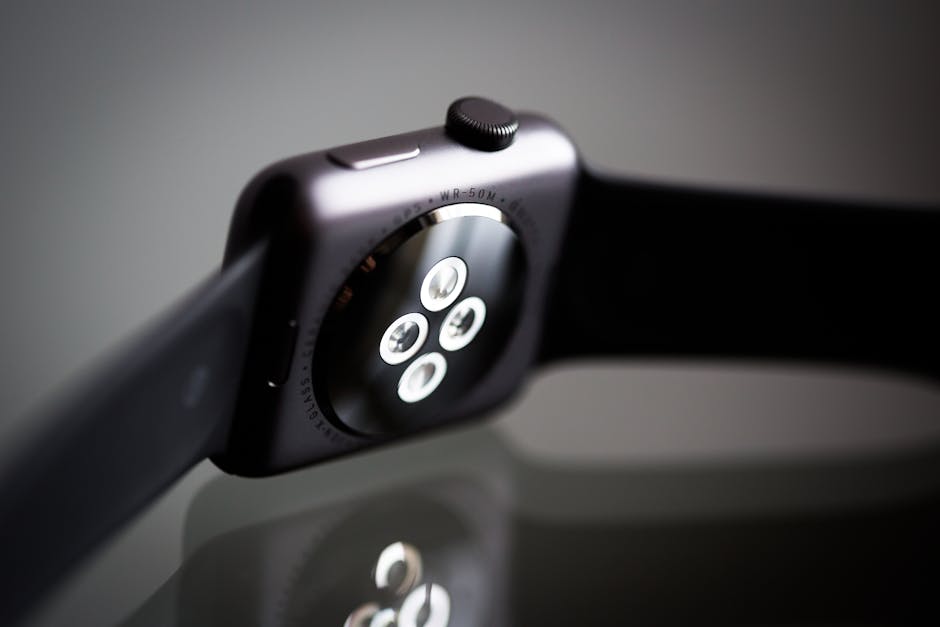It seems like everyone and their dog wants a smartwatch these days. And honestly, I get it. Who doesn’t want to feel like a sci-fi character, checking messages on their wrist? But the one feature people are really going nuts over is the SpO2 sensor. You know, the thing that checks your blood oxygen. A few years back, getting that in a watch meant you had to shell out big bucks. But now, in 2025, it’s a different story. You can actually find a decent smartwatch with SpO2 sensor under 5k. It’s wild.
The market is totally flooded with options, which is both a good and a bad thing. It’s good because you have choices. It’s bad because how do you even pick one? That’s what we’re here for. To sort through the noise and find some solid picks that won’t make your wallet cry.
Why is Everyone Obsessed with SpO2 Anyway?
So, what’s the big deal with this SpO2 thing? Basically, it measures the oxygen saturation in your blood. It’s a number that tells you how well your body is getting oxygen from your lungs to the rest of you.
Normally, for most healthy people, this number is between 95% and 100%. People who are into fitness, like hikers or runners, they like to keep an eye on it to see how their body is handling tough workouts. It’s generally a neat little piece of data to have about your own wellness.
But listen, and this is a big but. The SpO2 sensor on a watch under 5k is for general awareness. It is not a medical device. If you feel sick or have breathing problems, please, please go see a real doctor. Don’t trust your wrist to make medical decisions. That’s just common sense.
Top Picks: Best Smartwatches with SpO2 Under 5k in 2025
Alright, let’s get to the good stuff. We’ve looked at a bunch of watches that promise the world on a budget. Some are duds, but some are actually pretty solid for the money. Here are a few that are considered to be the best you can get right now.
The All-Rounder: NoiseFit Pulse 3
This one is kind of the go-to for a lot of people. It doesn’t do any one thing perfectly, but it does everything pretty well, which is honestly what most of us need. The design is simple, it doesn’t scream “look at my cheap watch.”
The screen is usually the first thing you notice, and on this one it’s a bright AMOLED display. That means colors pop and you can actually see it in the sunlight. The SpO2 sensor, it’s there and it works. It gives readings that are generally in the right ballpark when you compare it to a finger oximeter. Which for tracking trends, is good enough.
Screen: 1.8-inch AMOLED, nice and bright.
Battery Life: You can normally get about 5-7 days out of it.
SpO2: On-demand and automatic tracking options.
Other Stuff: Heart rate, sleep tracking, tons of sports modes.
The Style King: boAt Wave Pro X
If you want a watch that looks more expensive than it is, this is probably the one for you. boAt is really good at making things look cool, and the Wave Pro X is no exception. It often has a metal body and better strap options.
It has all the health tracking things you’d expect, including a SpO2 sensor. The accuracy is what you’d call standard for this price range. It works, it gives you a number, but you’re buying this watch more for the looks. The user interface is also typically very smooth and easy to use. Which is a bonus.
Screen: Big, crisp display, often with a premium feel.
Battery Life: A bit less, maybe 4-5 days, because of the fancy screen.
SpO2: Works fine for casual spot-checks.
Other Stuff: Bluetooth calling is a common feature here, looks great.
The Battery Champ: Fire-Boltt Apex Ultra
What’s the point of a smartwatch if it’s always dead? That’s the problem this one tries to solve. The Fire-Boltt Apex Ultra is built for people who hate charging their gadgets. It’s a beast when it comes to battery life.
You can often go well over a week, maybe even two, on a single charge with normal use. It’s able to do this because it might use a less power-hungry screen or a bigger battery. The SpO2 sensor is there, and it does the job just fine. You just don’t have to worry about the watch dying in the middle of the day. A very practical choice.
Screen: Generally a good LCD screen, not as punchy as AMOLED but saves power.
Battery Life: The main event, easily 10+ days.
SpO2: Reliable enough for keeping tabs on your levels.
Other Stuff: Very lightweight, rugged build sometimes.
What Else to Look For Besides the SpO2 Sensor?
The SpO2 sensor is cool, but a watch is more than just one feature. When you’re looking for a smartwatch with SpO2 sensor under 5k, you have to think about the whole package.
First, the app. The watch is only half the product. The other half is the app on your phone that it connects to. Some apps are clean and easy to use, others are a buggy mess. Look up reviews of the app before you buy the watch.
Then there’s the build quality. Is it plastic that feels like it’ll crack if you look at it wrong? Or does it have some metal and feel a bit more solid? A watch lives on your wrist, it’s going to get bumped.
And finally, little things matter. Does it have Bluetooth calling? Do you care about that? What about the watch faces, are there a lot of good options? Think about what you’ll actually use day-to-day.
A Word of Caution: These Aren’t Medical Tools
I’m going to say it one more time because it really matters. These budget smartwatches are awesome for what they are. They are fun gadgets that can give you a little more information about your body and your daily activity.
But they are not, and I repeat, not medical instruments. The sensors are good for the price, but they are not perfect. There’s a reason medical-grade devices cost a whole lot more. So use your watch to track your fitness trends, your sleep patterns, and your general wellness. But if you feel unwell, call a doctor. Simple as that.
—
Key Takeaways
You can definitely get a good smartwatch with an SpO2 sensor for under 5k in 2025.
The SpO2 feature is for general wellness, not for medical diagnosis. Always remember that.
Look for an overall package: a good screen, decent battery life, and a user-friendly app are important.
Brands like Noise, boAt, and Fire-Boltt offer some really competitive options.
Decide what’s most important to you—is it looks, battery life, or a bit of everything?
Frequently Asked Questions (FAQ)
1. Is the SpO2 on a 5k smartwatch accurate?
“Accurate” is a tricky word. It’s accurate enough to show you trends, like if your levels dip during a heavy workout. But it’s not medically precise. It can be off by a few percentage points compared to a real medical oximeter. So, use it as a guide, not a diagnosis.
2. Can I get a watch with calling and SpO2 under 5000?
Yes, absolutely. Bluetooth calling has become a really common feature in this price range. Most of the top models from Indian brands now include both SpO2 monitoring and the ability to take calls from your wrist.
3. What’s the biggest trade-off with budget smartwatches?
Generally, the biggest trade-offs are sensor precision and software polish. The companion apps can sometimes be a bit clunky, and the health sensors aren’t as exact as what you’d find on a watch that costs five times as much. You also won’t get stuff like GPS in most cases.
4. How long should the battery last on a good budget watch?
You should expect at least 5-7 days of battery life with normal use. Some models, especially those focused on battery, can even push past 10-14 days. If a watch only lasts 1-2 days, it’s probably not a good pick unless it has some crazy features.
5. Do these watches work with both Android and iPhone?
Pretty much all of them do, yes. They connect via Bluetooth and have a companion app available on both the Google Play Store and the Apple App Store. Just double-check the product page to be 100% sure before you buy.



